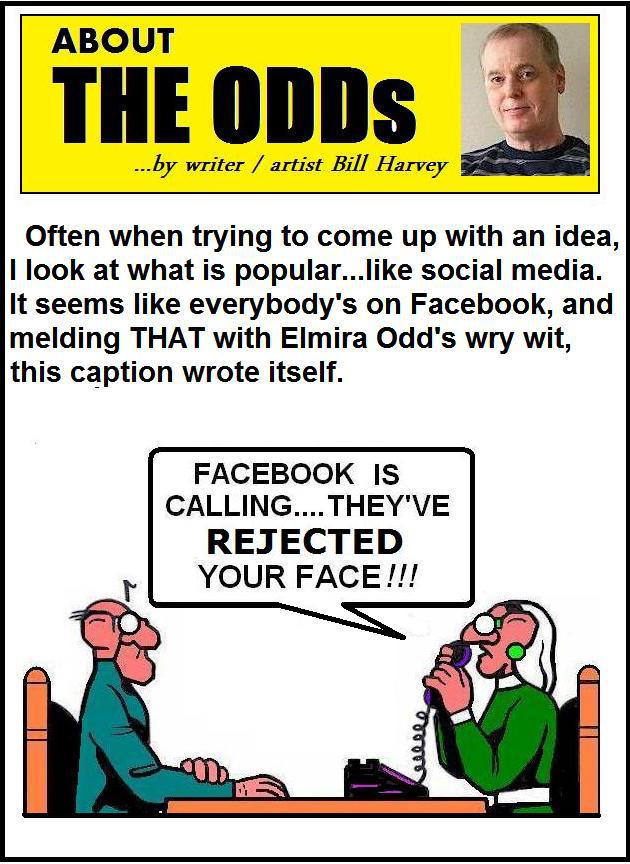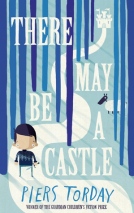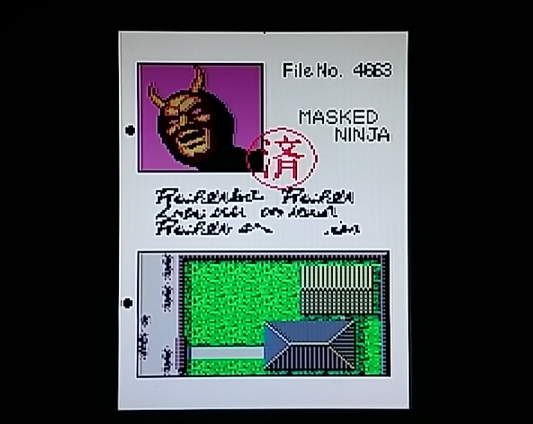
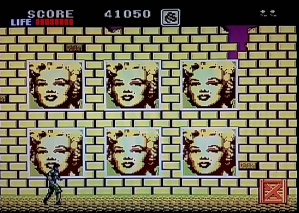
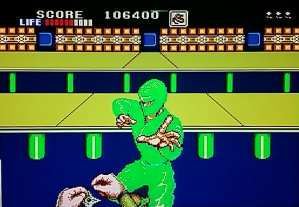
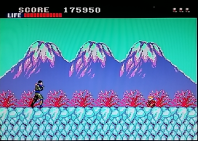
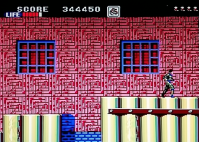
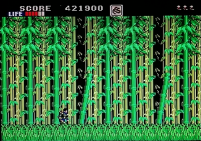
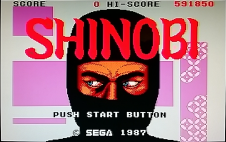
Only a ninja can stop a ninja!
I never had a Sega Master System growing up. I never knew a single person who did. Not one. Poor Sega never had a chance in the mid-1980s console market, at least in North America and Japan, where the god-king Nintendo lorded over all it surveyed. Although the Master System (also known as the Mark III) sold like crazy in South America and portions of Europe well into the 21st century, it was virtually invisible outside those far-flung markets. It’s a shame. The system hardware was quite advanced for the time and it was capable of displaying significantly more colorful and detailed graphics than the NES.
While technical superiority is nice, even the most powerful console is ultimately dependent on its software library. This turned out to be the Master System’s Achilles’ heel. Nintendo’s strict exclusivity policies meant that best and brightest game companies of the time were essentially forbidden to venture anywhere near it if they wanted a ride on that sweet NES money train. Superstar developers like Capcom, Konami, Enix, and Rare knew which side their bread was buttered on. Many of these same parties would later grow disgruntled with Nintendo’s anti-competitive, control freak ways, which was great news for Sega’s follow-up console, the Mega Drive/Genesis, but by then it was far too late to salvage the Master System in any market that had not yet fully embraced it.
This lack of third party support meant that Sega themselves had to do the lion’s share of the work propping the Master System up in the U.S., primarily with conversions of their own popular arcade games. It’s only fitting, then, that the first Master System game I’d ever play would turn out to be Sega’s own port of their 1987 arcade smash Shinobi.
Applied to a person, the Japanese “shinobi” essentially means “one who sneaks” and is used synonymously with the better-known term ninja. Deadly masked ninja warriors were everywhere in the 1980s. Well, everywhere in the media, that is. We had ninja movies, ninja tv shows, ninja action figures, ninja comics, and, of course, ninja video games. A side scrolling action platformer, Shinobi was one of the first games to put you in the shoes of one of these relentless shadow warriors. It was essentially a variation on (or, less charitably, a clone of) Namco’s Rolling Thunder from 1986, just with the pistol-packing James Bond style superspy replaced with a shuriken tossing ninja master named Joe Musashi.
Joe is tasked with rescuing the kidnapped children of his ninja clan from their abductors, the sinister terrorist organization Zeed and its leaders, the Ring of Five. At least in the arcade version. The Master System manual identifies the kidnap victims as the children of unspecified “world leaders.” Either way: Bad guys stole the kiddos, so go ninja the hell out of stuff until that’s all sorted out. Works for me.
The game includes fourteen regular stages filled with hostages to rescue and generic thugs to mow down, interspersed with boss battles against the Zeed head honchos and culminating in a final showdown with the imposing Masked Ninja. Joe starts out able to throw an unlimited amount of shuriken and take out close range targets with his punches and kicks. Rescuing specific hostages in each stage will upgrade his arsenal to a gun and sword for long and short range engagements, respectively. There’s also the matter of Joe’s ninja magic, which is essentially a “panic button” usable only once per level that will clear the screen of all regular enemies and deal heavy damage to bosses. Most stages feature a dual level battlefield with enemies and hostages placed both along the ground and atop walls and other high structures. Joe is able to freely transition between the two levels by holding up or down on the directional controls in conjunction with the jump button, and picking the right moment to do this in order to get the drop on enemies is a key part of the strategy. Between stages, there’s a short bonus game where Joe must fend off waves of enemy ninjas from a first person view and is rewarded with an extra life if successful.
Shinobi is a rather deliberately paced affair, which helps to set it apart from many other ninja action games. Experienced players can rush through it very quickly, but it often pays to stop for a second and think through the ideal way to approach a specific cluster of waiting enemies. The Master System version sticks very closely to the arcade blueprint for the most part, but there are a few drastic changes worth mentioning.
A health meter replaces the one-hit kills that Joe was subject to in the arcade. This cuts down on the difficulty somewhat, though not as much as you might expect, as it was balanced out by removing the ability to continue after a game over. Like the NES version of Double Dragon, this is a game you have to complete in one go or not at all. Luckily, your health gauge can be extended to allow Joe to absorb more damage, which brings me to the next major change: The hostage rescue system.
Unlike in the arcade, you don’t need to rescue all the child hostages in a stage in order to move on. You should still grab as many as possible, though, because there are many more potential rewards for doing so in the Master System port, including the previously mentioned maximum health increases, healing, and cool new weapon upgrades like bombs, knives, nunchaku, and a spiked chain. While these power-ups persist from stage to stage, they’re all stripped away the instant you die even once and rescued hostages never reappear to be collected again. This can be downright brutal late in the game. Making it all the way through the final stage on the puny default health bar can be done, but I don’t envy anyone making the attempt. I managed it…once.
Finally, the ninja magic has been heavily downgraded on the Master System. So much so that it’s almost worthless. It still functions as before, but you’re unable to access it by default like in the arcade. Here it replaces extra lives as your reward for winning the bonus stages. If you do manage to obtain some, there’s also a new and highly obnoxious restriction to deal with: You must defeat ten enemies in a given stage before you’ll be permitted to actually use any ninja magic you may have earned. I honestly cannot fathom the reasoning behind this change. By the time you’ve killed enough enemies to activate your magic, you’re likely nearing the end of the stage anyway. The game also treats boss fights as their own separate stages, so there doesn’t seem to be any way to use magic against them at all. At least stockpiled ninja magic doesn’t go away when you die like all the other power-ups. Blah.
Shinobi looks pretty good on the Master System. At least when it’s standing still. The sprites are large and detailed and there’s some great use of those bright colors the console is known for in the various stage backgrounds. Animation does suffer quite a bit, however. This is particularly noticeable when defeated enemies simply blink right out of existence because there are no frames included of them crumpling to the ground like they do in the arcade. This may seem like a small thing, but the visual feedback on your attacks really contributed to the original version’s satisfying feel. Just imagine Super Mario Bros. with the goombas Mario stomps vanishing on contact without being comically flattened first. It just ain’t right. The vertical scrolling whenever Joe leaps up or down between the different levels of a stage is also jarringly choppy for some reason. A game really shouldn’t look like it’s glitching out every time you just want to jump up to a platform. Even though a dip in overall quality coming from the System 16 arcade hardware was inevitable, I’m still inclined to expect better than this from Sega. They didn’t even include an ending! Instead, winning the game nets you the exact same game over screen that losing it does. Huh?
As for the audio…well, there’s no nice way to say it: The original Shinobi’s catchy soundtrack is essentially butchered here. You get a single short music loop that plays over every regular stage. The bonus rounds and boss fights each get their own track for a grand total of three songs, but that’s still 95% of the game during which you’re expected to sit there and listen to the same tinny tune. It’s borderline torturous. For what it’s worth, there are supposedly also higher quality versions of these same three songs included on the cartridge, though they can’t be played back unless you have the special FM sound expansion board that was produced exclusively for the Japanese version of the console.
Shinobi on the Master System has some real flaws. It doesn’t look or sound as great as it should and the super cool ninja magic has been watered-down to the point of total superfluousness. On the plus side, the addition of a health bar and persistent power-ups makes the gameplay a lot more forgiving from moment to moment, while the lack of continues and potentially massive disempowerment that each death brings tends to makes the player more cautious and focused on surviving over the long term. Ideally, you want to be able to make it all the way to the end of the game on your first life so that you never have to deal with losing your health and weapon upgrades. It makes the whole experience a lot more “consoley,” if that makes any sense, without requiring any major changes to the stage layouts and enemy placement that fans were already familiar with from the arcade. Though not perfect, it still stands head and shoulders over any other home port and remains the best way outside of an arcade to experience Joe Musashi’s first adventure.
Now that I’ve finally toppled the Zeed syndicate, I’m really looking forward to seeing where my exploration of the Master System library will take me next. Hiyaa!
Advertisements Share this:


